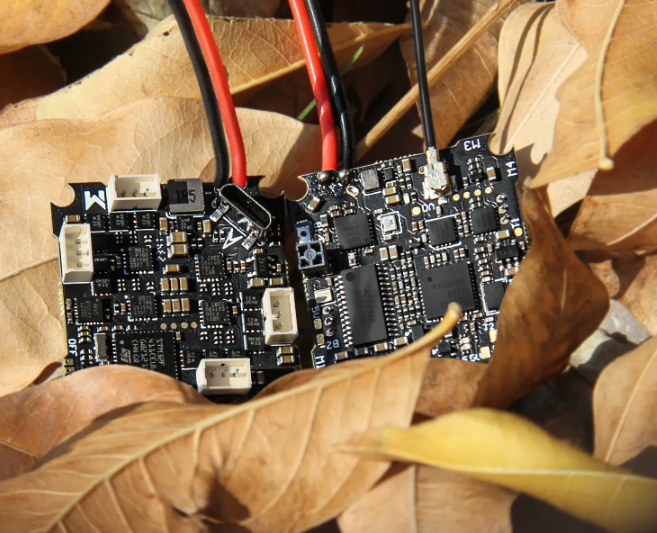Understanding the Core of AIO Flight Controller
In the realm of FPV drones, an AIO (All-in-One) flight controller reigns supreme, acting as a centralized hub integrating crucial components essential for drone control. These components include:
- Flight Controller (FC): Acting as the brain of the drone, the FC processes sensor data to stabilize the craft and execute flight commands.
- Electronic Speed Controllers (ESCs): These modules regulate motor speed and power delivery, ensuring smooth and controlled flight.
- On-Screen Display (OSD): Providing real-time flight data such as battery voltage and altitude on the pilot's FPV feed, enhancing situational awareness.
- Receiver: Facilitating communication between the pilot's radio transmitter and the FC, allowing precise control over the drone.

Advantages Offered by AIO Flight Controllers
The utilization of AIO flight controllers brings forth a myriad of benefits:
- Streamlined Build: By consolidating multiple components onto a single board, AIOs simplify the drone build process, reducing overall complexity.
- Weight Optimization: AIOs contribute to weight reduction, improving the drone's agility and flight performance.
- Compact Design: Ideal for micro and mini FPV drones where space is limited, AIOs offer a compact form factor without sacrificing functionality.
- Enhanced Aesthetics: AIOs contribute to a clean and organized build layout, enhancing the visual appeal of the drone.
Considerations When Using AIO Flight Controllers
Despite their advantages, AIO micro flight controller has certain limitations:
- Limited Upgrade Options: AIO boards may limit the ability to upgrade individual components, potentially restricting customization.
- Reduced Flexibility: Compared to separate components, AIOs offer less flexibility in component selection, limiting customization options.
- Troubleshooting Complexity: Troubleshooting issues with AIOs may be more challenging, as it often involves diagnosing and replacing the entire board.
Compatible Drone Sizes
AIO flight controllers cater to a range of drone sizes, including:
- Tiny Whoops: Designed for small and lightweight drones, Tiny Whoop-compatible AIOs typically feature compact form factors such as 16x16mm or 20x20mm.
- Toothpicks: Suited for slightly larger drones, Toothpick-compatible AIOs may utilize 20x20mm or 25x25mm configurations.
- Micro Quadcopters: Targeting medium-sized drones, Micro Quad-compatible AIOs often come in 25x25mm or 30x30mm sizes.
- Mini Quadcopters: Designed for larger drones, Mini Quad-compatible AIOs may feature standard 30x30mm or full-size configurations.
When selecting an AIO flight controller, it's essential to consider compatibility with the drone's frame size and mounting options.
Tips for Choosing the Best AIO Flight Controller
When choosing a flight controller for drone, consider factors such as:
- Size and Weight: Opt for a compact and lightweight controller to ensure compatibility with the Tiny Whoop frame and maximize flight performance.
- Features vs. Price: Balance the desired features with your budgetary constraints, ensuring that the chosen flight controller meets your needs without overspending.
In conclusion, selecting the perfect AIO flight controller involves careful consideration of compatibility, size, weight, features, and price, ensuring optimal performance and functionality for your FPV drone.